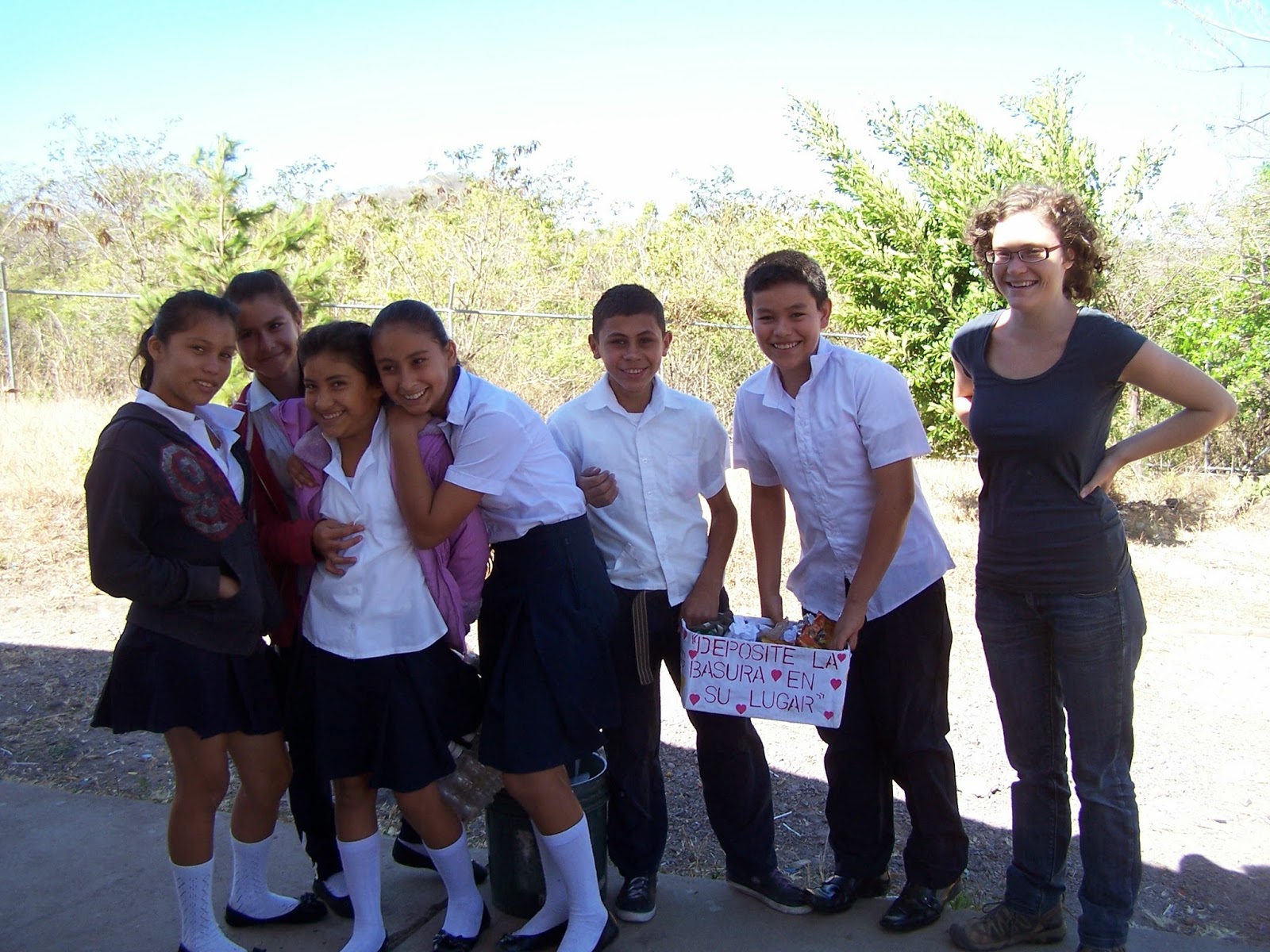This week we begin teaching our own
after-school English classes for high school, primary school, and
adult students. These are all, of course, optional classes in
addition to the required high school English classes.
Unlike second language requirements in
US high schools, in Nicaragua English is a required class for all 7th
through 11th grade students. At the US high school that I
went to in Indiana, depending on the diploma you sought, you could
get away with taking only two years, or at most three years, of
Spanish or French classes. In contrast, Nicaraguans cannot graduate
from high school without taking five years of English classes.
It's true that knowledge of English is
a pretty crucial skill on a world-wide level, but even as an English
teacher myself, I've sometimes wondered why kids in such a remote
part of Nicaragua, whose lives are about corralling cattle and
harvesting beans, need to know English? English is, after all, only
the third most spoken language in the world (after Mandarin and
Spanish). And in a town where almost no one speaks passable English,
what in the world will these kids do with five years of English
lessons under their belts?
One answer, of course, is go to the US,
find a job that pays less-than-minimum wages for undocumented
immigrants who speak broken English, and spend their lives sending
money back to their children in Nicaragua. But the Nicaraguan
government can't be training its children in English just so they can
leave Nicaragua, can it?
No, especially with the tourist
industry growing so rapidly in Nicaragua, there must be a Nicaraguan
work sector that requires English. In an effort to incite our
students to take learning English seriously (and to figure out why in
the world we were teaching them English in the first place), we did
some investigating in the city of Esteli, an hour away from San
Nicolas.
We went around to various businesses in
Esteli that we thought might hire English speakers and talked to the
workers who were actually using the English they learned in high
school for their jobs. We asked about their wages and their
responsibilities and how they used their English, and then we
reported back to our students. To give you an idea of how these
workers' wages compare to other Nicaraguan wages, the farmers at the
agricultural association where we volunteer earn around $110 a month.
Teachers at the local public high school earn around $200 a month.
In Esteli we visited Hostal Sonati, a
hostel that pays an English-speaking tour guide to show tourists
around and do environmental education. We also visited Intur, the
government-run tourist agency, where English speakers help put
together tourist brochures and literature in English. Both of these
tour guides offer a starting salary of around $155 a month.
At Hotel Los Arcos, a nice hotel in
Esteli, the receptionist told us that they always have one English
speaker to greet guests at the front desk. The receptionist told us
that she studied tourism at university and as part of that degree had
to take several English classes. A hotel receptionist who speaks
English at Los Arcos earns between $190 and $310 a month.
Esteli is known for its tobacco, and we
figured that with all the exporting that goes on, the many cigar
factories in town must hire English speakers too. At the factory Joya
de Nicaragua, we met a young man who spoke almost perfect English. He
told us that he studied English intensively for about 2.5 years. At
Joya, he deals with international sales and also gives tours to
English-speaking visitors. As he was giving us our tour, he threw out
English cigar jargon like it was nothing, taking puffs on the huge
cigar dangling from his fingers as we went. In such a profitable
business, an English speaker like this guy can earn $700 a month.
The man at Joya de Nicaragua also told
us that people who speak English and work for a big company have a
much better chance of excelling and working their way up the company
ladder than people who don't speak English. He said that now is an
ideal time to study English, because even though everyone studies
English in high school, very few people actually speak it well, so
the market is wide open. Right now, it's very easy to find a job for
someone who speaks English, and the English job market is only
growing. English speakers are needed for all kinds of jobs in the
growing tourism industry, and call centers that hire English speakers
to troubleshoot over the phone for Americans have recently been
introduced in Nicaragua. And now with the Nicaraguan Canal project
just on the horizon, for better or worse, Nicaraguans who speak
English are becoming invaluable.
All of these jobs, of course, would
require our own English students to leave the small town of San
Nicolas to find work in a bigger city. And while in some ways it
makes me sad to think about some of the brightest San Nicolaseños
leaving their beautiful home town to go elsewhere, I think English
knowledge can also be a hope for a better life for these students.
And this, I hope, is where the value of our English classes lies.








